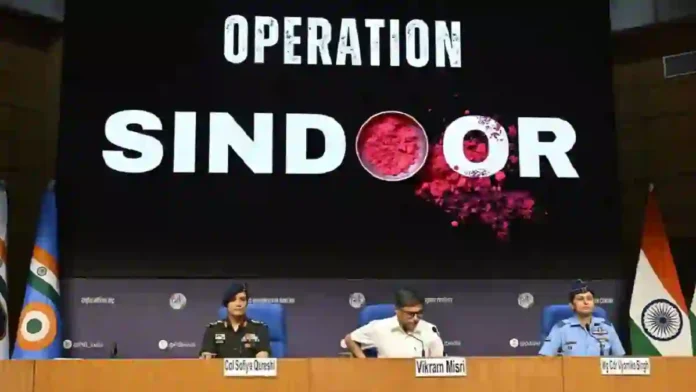In the wake of the deadly Pahalgam terror attack, where 26 civilians lost their lives, Indian intelligence agencies and defence forces identified over 20 terror targets located in Pakistan and Pakistan-occupied Kashmir (PoK) as part of Operation Sindoor, which commenced in May 2025. PM Modi and and Defence Minister Rajnath Singh held detailed discussions with intelligence and defence forces after the list of targets was drawn up; India attacked nine of them later.
The process of target selection was meticulous and involved high-level deliberations, including meetings chaired by Defence Minister Rajnath Singh with the chiefs of the Army, Air Force, and Navy. Among the primary targets discussed from the outset were the Markaz Taiba camp in Muridke and Markaz Subhanallah in Bahawalpur, both considered significant operational hubs for Lashkar-e-Taiba (LeT) and Jaish-e-Mohammad (JeM) respectively.
Read- Assam Govt Plans Permanent Indian Army Base To Enhance Security In Dhubri District
After detailed consultations, including a Cabinet Committee on Security meeting led by Prime Minister Narendra Modi, a final list of nine targets was approved for precision strikes. The guiding principles for these operations were clear: avoid civilian casualties, respect religious sentiments, and refrain from targeting military installations.
This directive was communicated unequivocally to the heads of intelligence and defence agencies, who were also given a free hand to neutralize any terror camp across the border, provided these conditions were strictly adhered to.
The strikes were executed with precision, focusing solely on terrorist infrastructure. The nine targeted sites included four in Pakistan and five in PoK. Notable among these were the JeM stronghold at Markaz Subhanallah in Bahawalpur, LeT’s nerve centre at Markaz Taiba in Muridke, and other camps associated with Hizbul Mujahideen.
Read- India-US Deal To Produce F-414 Jet Engines To Be Sealed By March: HAL Chief Sunil
Locations such as Sarjal at Tehra Kalan, Markaz Abbas in Kotli, Syedna Bilal camp in Muzaffarabad, Markaz Ahle Hadith at Barnala, Shwawai Nalla camp at Muzaffarabad, Makaz Raheel Shahid in Kotli, and Mehmoona Joya in Sialkot were also struck. The operation demonstrated India’s capability to penetrate deep into Pakistani territory, including Punjab province, and deliver measured, non-escalatory responses to terror threats.
Throughout the operation, Indian forces showcased advanced capabilities, employing Rafale jets with SCALP missiles and HAMMER bombs, successfully jamming Pakistan’s air defence systems and completing the mission in a rapid, 23-minute window. The strikes were described as focused and restrained, with no Pakistani military facilities targeted, underscoring India’s intent to avoid escalation and civilian harm.
Operation Sindoor was a carefully planned and executed military response, targeting more than 20 identified terror sites with nine ultimately chosen for precision strikes. The operation marked a significant shift in India’s counter-terror doctrine, sending a clear message that terror infrastructure across the border would not be tolerated, while upholding strict rules of engagement to prevent civilian or religious harm.
Agencies




